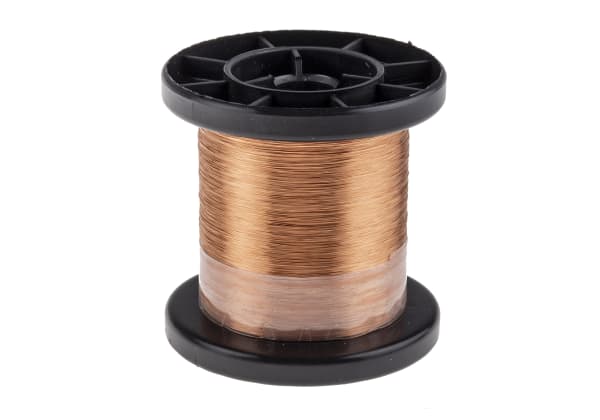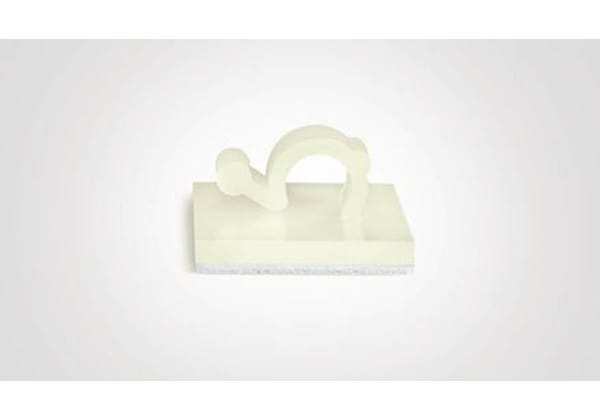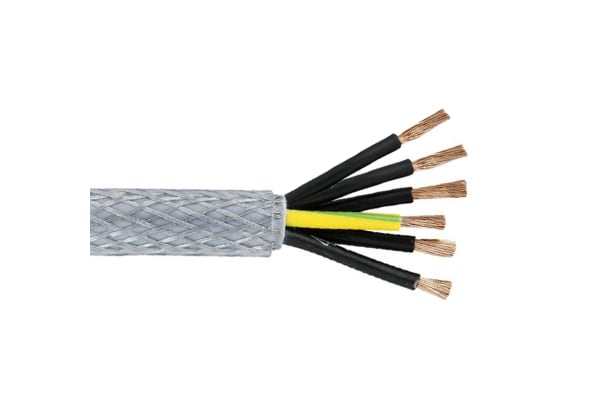- Published 29 Dec 2022
- Last Modified 8 Jan 2025
- 8 min
Electrical Wire Colours & Colour Code for Australia
What do the different electrical wiring colours refer to? Find out more in our wiring colours guide.

******
Knowing the correct wire colours is necessary for safe and effective electrical work. However, it's important to note that wiring colours can vary across countries and regions. Therefore, familiarising yourself with the specific wire colour codes in Australia is vital for both safety and compliance with Australian Standards (AS/NZS 3000).
Explore further details in our wiring colours guide below.
Electrical Wiring Colour Codes in Australia
Changes to the wiring colour codes have led to a standardisation across all electrical installations. Now, both fixed and flexible electrical cables utilise the same colour wires, simplifying installation processes and enhancing safety by providing clear and consistent wiring identifications for all types of electrical work. The colours for 240v electrical wires in Australia are:
- Brown Wire: In Australia, brown is the designated live wire colour, which is responsible for transferring electricity to the appliance. This ensures that power reaches your electrical devices safely and directly.
- Blue Wire: The blue wire, also referred to as the neutral wire, transfers electricity away from the appliance. It completes the electrical circuit by directing the current back to the power source, crucial for maintaining the stability and safety of the system.
- Green & Yellow Wire: The green and yellow wire commonly known as the earth wire, plays a vital safety role in electrical systems. Electricity being transferred around any property will always take the path of least resistance to the earth. In cases where live or neutral wires are damaged, the risk of electrocution increases significantly, as electricity may pass through the human body on its way to the earth. The earth wire effectively prevents this dangerous situation by safely grounding electrical appliances, ensuring user safety and compliance with electrical safety standards.
In addition to the changes in Australia's electrical colour code, all installations should feature warning signage where circuits or fixed cables use mixed-colour wires. This is to ensure clear identification and safety, and these warnings should be prominently displayed on either the fuse board or the consumer unit.
Essentially, the updated AS/NZS 3000:2018 standard establishes guidelines for designing, constructing, and verifying electrical installations throughout Australia. It ensures the appropriate selection and installation of equipment to protect people, animals, and property from hazards such as electric shock and fire. This standard is crucial in upholding safety in residential, commercial, and public buildings across Australia’s unique landscape, from urban centres to remote outback areas.

Brown Wire = Live Wire
The brown wire, also known as the live wire or active wire, is responsible for delivering electricity to the appliance. If the brown wire is live and not properly connected to the earth or neutral wires, there is a significant risk of electrocution. Always ensure that there is no power source connected to the live wire before performing any work on the wiring.

Blue Wire = Neutral Wire
The neutral wire is identified by its blue color. Its primary function is to carry electricity away from the appliance, preventing overload. Positioned at the end of the circuit, it connects after the electricity has passed through the live and earth wires. While the risk of electric shock from a blue wire is low, caution is necessary, as this wire can still operate at very high temperatures.

Green and Yellow Wire = Earth Wire
The earth wire is distinguished by its green and yellow stripes. This wire plays a critical safety role by connecting the metal casing of electrical appliances to the ground. This connection ensures that the current from the live wire does not directly flow to the casing. Contact with the protective earth wire should not result in an electric shock, but it is always wise to exercise caution.
You can find a wide selection of cables and wires that adhere to Australian standards at RS.
Wire Plug Colour Code
Inside the typical Australian three-pin plug, three electrical wires are carefully arranged according to standard colour codes: brown for the live connection, blue for the neutral, and green/yellow for the earth.
Here’s a breakdown of the key components and their corresponding wire connections:
- Active (L) Pin - Brown Wire: This wire is connected to the Active pin, which is usually positioned on the right side when the plug is viewed from the front with the earth pin on top. The Active pin is narrower than the Neutral pin to prevent incorrect connections.
- Neutral (N) Pin - Blue Wire: The Blue wire connects to the Neutral pin, typically found on the left side when the plug face is oriented with the earth pin at the top. The Neutral pin is wider than the Active pin.
- Earth (E) Pin - Green/Yellow Wire: This wire connects to the Earth pin, which is the longest of the three pins and is located at the top centre of the plug when viewed from the front.
Safety and Compliance Tips When Working with Electrical Wiring
Follow these tips to ensure electrical safety and compliance:
- Turn off all power sources before starting any electrical work to avoid accidents.
- Protect yourself by wearing suitable gear, such as insulated gloves, during installations.
- Consider using a plug tester to ensure the wiring is correctly configured after installation.
- Ensure compliance with wiring standards—such as the correct wiring colours and safe installation practices outlined in AS/NZS 3000—to maintain electrical safety and functionality.
- Actively inspect and promptly replace any damaged plugs or wires to ensure the reliability and safety of your electrical systems.
- If unsure or faced with complex tasks, seek the expertise of a licensed electrician.
Historical Changes to Old Electrical Wiring Colours in Australia
The evolution of electrical wire colours in Australia reflects significant safety and standardisation advancements over the years. Pre-2000, the Australian electrical colour codes used red for active wires, black for neutral, and green or green with yellow stripes for the earth wire. These colours were standardised across various installations, including residential, commercial, and industrial settings.
However, in 2000, Australia undertook a significant update to align with international standards, particularly those set by the International Electrotechnical Commission (IEC 60445). As part of this update, solid-core wiring was phased out in new domestic installations and replaced with more flexible stranded wiring.
This change was necessary because the solid-core wires were prone to breaking due to how Australian electrical fittings attach, with a grub-screw pressing against the side of a hollow brass ferrule. Stranded wiring, being more flexible, reduces this risk and ensures greater durability.
The new standard also shifted the colours to brown for active wires, blue for neutral, and maintained green/yellow for earth wires. This colour update was established to facilitate smoother integration of Australian electrical systems with global markets and ensure that Australian wiring practices are universally recognised and adhered to. Moreover, while the major change happened in 2000, subsequent adjustments and clarifications were made in 2018 to reinforce these standards and address any evolving requirements.
Nevertheless, older buildings or houses in Australia that were constructed before 2000, still function safely and effectively with the previous wire colour codes. However, awareness of the newer standards is critical to ensure compliance with current safety regulations and facilitate the correct integration of modern electrical components with legacy systems.

Practical Implications for House Wiring Colours
When carrying out any electrical work in your home, keep these guidelines in mind:
- If you're working on or inspecting electrical installations that were set up before 2000, it’s important to recognise these older colour codes to avoid confusion or safety risks.
- Mixed wiring systems can exist in properties that have undergone partial upgrades. In such cases, clear labelling or testing is essential to ensure safety.
- To confirm the age of the installation, you may need to refer to documentation, consult an electrician, or inspect the compliance date on electrical equipment and wiring.
Three-Phase Wiring Colours
Three-phase wiring is a type of electrical distribution method favoured in environments like industrial facilities, commercial buildings, and heavy machinery that require substantial power supply. Unlike single-phase connections, three-phase wiring uses three alternating currents, each phase evenly spaced in its cycle, which balances the power load more consistently and efficiently. It is particularly valuable in powering large AC and DC motors and heavy loads.
To ensure safety and accuracy in electrical setups, it's essential to distinguish between single-phase and three-phase wiring. For single-phase connections in Australia, the wire colour codes are as follows—the brown wire is active, blue is used for the neutral wire, and green and yellow mark the earth wire.
Meanwhile, the colour codes for three-phase wiring in Australia cater to its more complex system needs:
- Phase 1 (L1): Brown - This wire is used as the first phase, carrying the current essential for the system’s operation.
- Phase 2 (L2): Black - Serving as the second phase, this wire helps distribute power evenly across the circuit.
- Phase 3 (L3): Grey - The third phase, marked by grey, completes the cycle, ensuring a stable and continuous power supply.
- Neutral (N): Blue - Similar to single-phase setups, the blue wire is neutral in three-phase systems, providing a return path for the current.
- Earth: Green/Yellow Stripe - This wire grounds the system, enhancing safety by preventing potential electric shocks.
However, do note that some older installations may still use the previous Australian electrical colour code. To avoid confusion, refer to the pointers below for a clear comparison of the old and new wiring colours:
Phase | New Wire Colour Code | Old Wire Colour Code |
|---|---|---|
| Phase 1 (L1) | Brown | Red |
| Phase 2 (L2) | Black | White |
| Phase 3 (L3) | Grey | Blue |
| Neutral (N) | Blue | Black |
| Earth | Green/Yellow | Green |
Disclaimer: For safety and compliance, always consult a licensed electrician for any electrical work or upgrades.
Common Mistakes and Safety Hazards
- Misidentification of wire colours leads to incorrect connections and potential short circuits or electrical fires.
- Risks of non-compliance with updated wiring standards, which can result in safety hazards and potential legal consequences.
- Failure to properly label or test mixed wiring systems after upgrades increases the risk of incorrect installations or malfunctions.
- Inadequate grounding or bonding of electrical systems can lead to electric shocks or appliance damage.
- Ignoring the age and condition of existing wiring, which may be outdated or deteriorated, poses a risk of electrical failures or fires.
Frequently Asked Questions About Electrical Wire Colours in Australia
Further Reading
Related links
- From Toggle to Smart: A Homeowner's Guide to Selecting Light Switches
- Wiring an Ethernet Cable to an RJ45 Connector
- A Comprehensive Guide to RJ45
- A Complete Guide to Contactors: What It Is and How It Works
- Optimising Electrical Wiring with Heat Shrink Tubing
- Light Switches
- The Ultimate Guide to USB Cables by StarTech.com
- Complete Guide to MCBs: Type A C D Circuit Breakers


